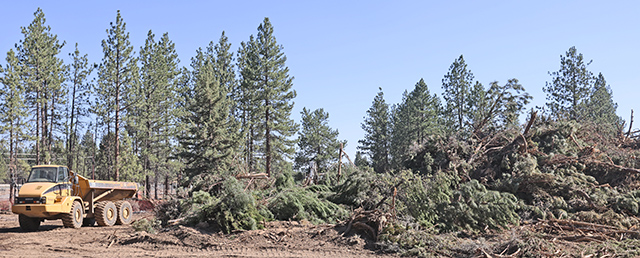Winter storms bring above-average snowpack to Central Cascades
Published 5:00 am Thursday, January 13, 2022

- Cory Barnett of Newberg walks the perimeter of the Mt. Bachelor parking lot as his wolf hybrid Cinder trots along the snow berm. Mt. Bachelor reports 254 inches of snow this season and a 72-inch base.
Following a dry stretch in November and most of December, heavy snowfall in the Cascades boosted snowpack levels to percentages well above normal. The fresh snow doesn’t end the drought affecting the area but could help to alleviate some of its worst impacts.
It has also been a welcome sight for skiers, sled riders and snowshoers.
Trending
As of Monday, snowpack in the Upper Deschutes and Crooked River area was 130% of average, based on the past 30 years of data, according to the Natural Resources Conservation Service. Precipitation for the water year, which began Oct. 1, is 110% of normal.
Statewide, the picture is even better. Oregon snowpack is 148% of average, ranging from 113% in the Malheur basin to 195% of normal in the Hood, Sandy and Lower Deschutes area. Statewide precipitation is 113% of normal for the water year.
As of Monday, snow depths include 39 inches at Three Creeks Meadow (elevation 5,960 feet), near the Jefferson View Shelter on Forest Road 700; and 73 inches at McKenzie Snotel site (elevation 4,770 feet), which is close to Scott Lake.
Some of the state’s deepest snow is located around Mount Hood, where a snow depth of 98 inches was recorded Monday.
“This is a good beginning to potential drought relief, particularly in the regions impacted by the extreme and exceptional drought,” said Scott Oviatt, snow survey supervisory hydrologist for the U.S. Department of Agriculture’s Natural Resources Conservation Service. “The remainder of the winter will determine if long-term improvements will assist in mitigating the multi-year drought in Oregon.”
Snowpack that persists into the spring and summer also helps mitigate the risk of wildfires later in the year by keeping forests cool and damp.
Trending
A report published by Oregon State University in November also suggests forests that have been burned by wildfire regenerate faster when snow cover is present. That is good news for Warm Springs, where the Lionshead Fire ravaged around 100,000 acres of forest on the reservation in 2020.
The recent heavy snowfall came after an unusually dry start to the winter season.
“Snowpack was scarce early in the water year, with warmer temperatures resulting in rain at all elevations, with snow limited to the highest elevations,” said Oviatt. “Many basins, particularly east of the Cascades, had little or no measurable snowpack on Dec. 1.”
The snowstorms have helped open ski resorts and sno-parks. Mt. Bachelor, Hoodoo and Willamette Pass have most of their lifts in operation. For sledders, cross-country skiers and snowshoers wanting to visit sno-parks, annual permits for the parks can be purchased for $25 through the DMV, or a few dollars more at select ski shops in Bend.
While the ski resorts are obvious beneficiaries of the recent winter storms, the snowpack is also a good sign for farmers and ranchers, especially those in the water-starved North Unit Irrigation District, which has suffered severe water shortages for three years.
“Clearly folks are glad to see the snow and rain but recognize there’s still a lot of winter left,” said Mike Britton, executive director of the district. “Hopefully the weather patterns continue to drop snow and don’t dry up as they have in past years.”
But there is a caveat to all this wet weather. Even if the heavy snows continue, refilling this area’s reservoirs will take several strong winters due to drought, depleted aquifers and climate change. Heavy saturation of soils and aquifer recharge is needed before streams and springs have enough overflow water to boost reservoir levels.
Larry O’Neill, associate professor at Oregon State’s College of Earth, Ocean and Atmospheric Sciences, said the precipitation is likely just a blip in a longer trend of dry and warm weather.
“Even with the good year so far, the long-term trend due to climate change remains unchanged,” said O’Neill. “It is definitely a year to enjoy it while we can.”
O’Neill’s concerns are backed up by the data from the U.S. Drought Monitor, which shows all of Crook County, half of Jefferson County and about a third of Deschutes County in the highest level of drought. Drought statistics are updated weekly; the most recent data is expected Jan. 13.
Wickiup Reservoir, now at 34% of capacity, is refilling at a pace similar to last year’s rate. At the current pace, the reservoir will reach 58% of capacity (115,000 acre-feet) when the irrigation season starts again at the beginning of April.
Other reservoirs in the area that are struggling to fill include Crescent Lake (11% full), Prineville (18% full) and Ochoco (10% full).
“The drought is far from over,” said Kyle Gorman, region manager for the Oregon Water Resources Department. “It took several years to get us into this situation so it will take several years of above-average precipitation and snowpack to get us out.”






